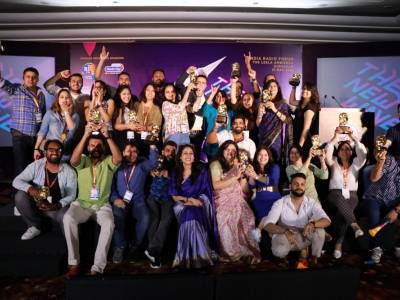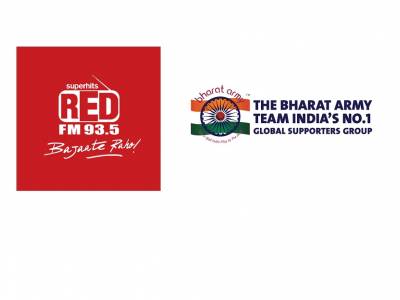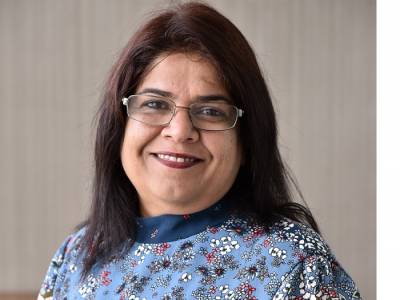The W-Suite | Women in India earn 25% less than men: Nisha Narayanan
With a rapidly evolving business and economic landscape there is a dire requirement of fresh thinking, new skill sets, greater flexibility & adaptability, more collaboration as well as the ability to think on one’s feet.
Gone are the days when the thinking was more on the lines of ‘get a man to do this job’. Diversity in the workforce has become a necessity today, and more so in the leadership positions. It can’t be denied that women bring a high level of creativity and empathy while solving problems and handling crises. Women leaders bring to the table a different level of dexterity.
AdGully’s ‘The W-Suite’ series features interactions with influential women leaders in India, who share some deep insights on what being a woman leader means in India’s business landscape, the mantras to succeed, achieving work-life balance, pay parity and much more.
Nisha Narayanan, COO, Red FM, and a prominent name in the radio industry, has been spearheading the growth and expansion of the Red FM network across the country. Narayanan has straddled both public and private radio players, starting with All India Radio, where she joined as an RJ. Prior to Red FM, she was heading the FM Projects at South Asia FM for five years.
In the course of her over two decade long career, Narayanan has dabbled with both radio and television. Her realm of knowledge encompasses areas such as programme planning, presenting, production and management, and leading from the front. Her broadcast career coincided with the growth of cable and satellite television. She has produced various documentaries and had been a newscaster primarily on Doordarshan. In the early part of her career, she had not only covered live events and national issues, but also hosted chat shows and debates.
What defines a woman leader in today’s ecosystem?
In modern day workforce, women are heading leadership roles across sectors. In addition to being a great leader, she should not only be an industry expert, but also have the vision and ability to see a bigger picture. She should inspire trust, be creative, take the risk, promote change for good and be confident about their decisions. Gender does not make leaders, it’s the confidence in self, team determination, unique perspectives, setting goals and achieving targets that truly define a leader.
Why do you think a smaller percentage of women than men reach the top of their professions?
According to a report by LinkedIn, India historically lagged in hiring women into leadership position earlier, which has now gained significant momentum seeing a large increase in percentage being hired into leadership roles (25 per cent). In today’s scenario, we see that women emerge as great leaders and head unconventional businesses. In terms of women in leadership roles, India is among the lowest countries. As long as you are committed and take chances, there is nothing that you can’t achieve. There is a stereotypical mind-set and it’s not easy to change that, but then to reach the top we need to have the fighting spirit within ourselves and things will automatically fall in place.
Do you think women leaders are still scrutinised as much for style as for substance?
Holding a senior leadership role in an industry majorly dominated by men, I do not feel that in modern day workforce women leaders are scrutinised for style as for substance. As leaders, we need to be thorough with everything happening around to provide the larger perspective to your team. The concept of being considered dumb just because you dress well does not hold much relevance today. Despite gender disparity, women have made their marks in unconventional businesses and are smart, determined and ambitious, who lead by examples. We need to walk-the-talk for gender disparity and work towards the goal of equal opportunities and efficient workforce.
Do you think the leadership effectiveness of women is higher than men? Why?
I do not think that gender has anything to do with a successful leader. However, we have always heard theories and speculations about a difference between leadership abilities of men and women. With different personality traits, men and women act differently in diverse circumstances. The differentiating factor can be women being inspiring and motivating as this trait comes to them naturally. At Red FM, we hire people basis their talent and not gender. While hiring we look for spunk, creativity, and dedication.
Women leaders in the 80’s and 90’s and women leaders today – what are the key differences? And what are the things that haven’t changed much?
Earlier in 80’s and 90’s, there were lesser women in senior leadership roles, but then it was the era when India had a lady Prime Minister. But in modern day workforce, women are running businesses like banking and finance, insurance, radio, etc., which were earlier male dominated professions. There has been a significant shift in terms of opportunities from then to now. As issues like gender pay gap and disparity still exist, senior management and employees should work towards eradicating them. Nowadays, organisations are working towards more effective female-friendly policies like maternity leaves, women’s safety, etc.
How do you maintain a balance between career goals and family responsibilities? How frequently do you have to sacrifice one for the other?
Finding the right balance between work-life is difficult for everyone, however, responsibilities only grew as one climbs up the career or family ladder. There have been instances where I have missed PTM as my work required more attention, but then I make sure I do not compromise on my personal front either. There are times when work requires more time and vice-a-versa; one needs to prioritise.
Do you think pay parity exists in our corporates today across levels? What about pay parity at the leadership levels?
Women in India earn 25 per cent less than men, proving that gender continues to be a significant parameter in determining salaries in India on gender. The gap has lessened by 2 percentage points from 27.2 per cent in 2015 and is closer to 24.1 per cent in 2016, according to Monster Service Index Report 2016. The pay parity may exist in many corporates, but one needs to focus on improvising our own skill set and let our capabilities do the talking.
What would be your advice to women aiming for the C-suite?
My advice to women aiming for the C-suite is that one needs to be confident, fearless, and most importantly, believe in yourself. One can thrive only if you are committed and challenge ordinary to be extraordinary.
What, according to you, are the 3 important lessons new women leaders need to learn?
My advice to all the bold and beautiful women out there is – compete with yourself, set your own goals and evaluate and do not pay much heat to gender diversity, just focus on chasing your dreams.





















Share
Facebook
YouTube
Tweet
Twitter
LinkedIn